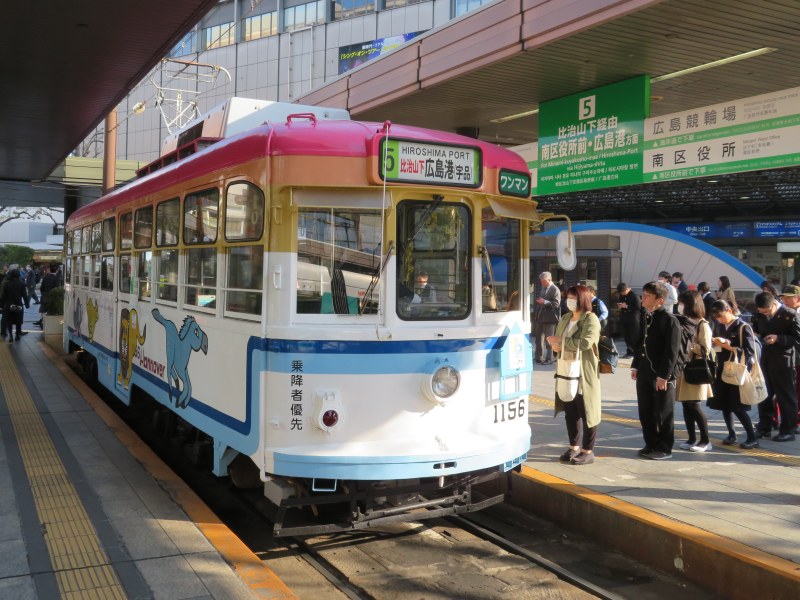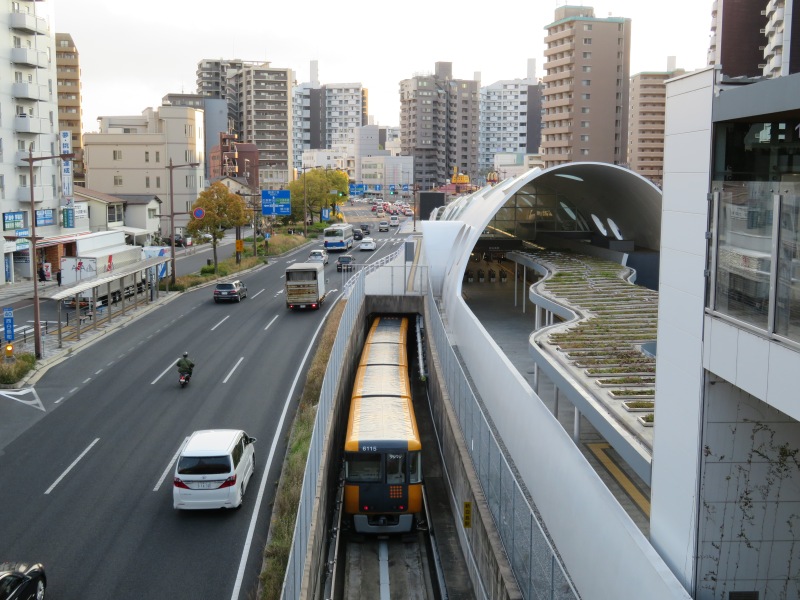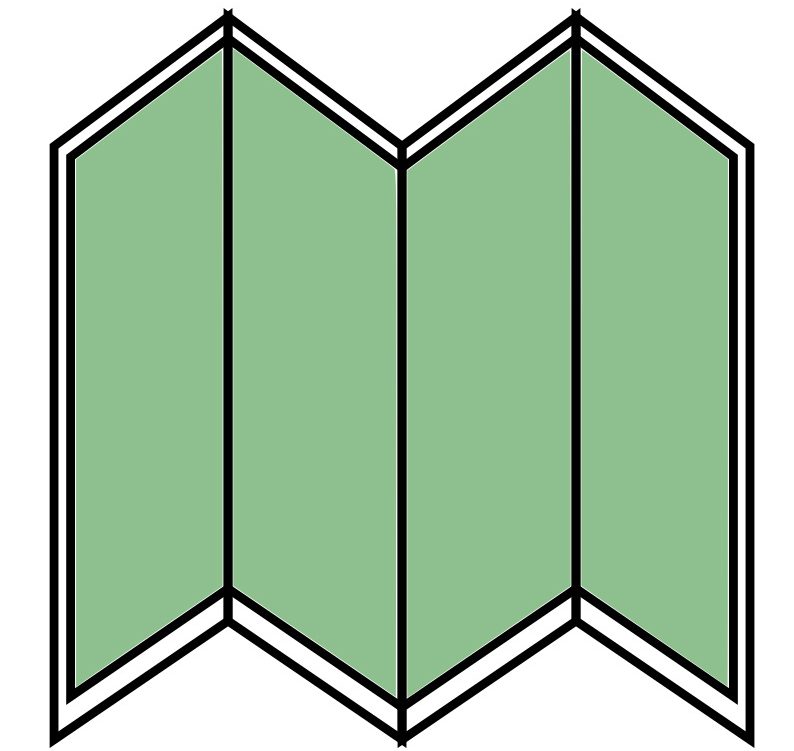 The Hiroshima Peace Memorial (A-Bomb Dome), with modern Hiroshima rising beyond. Despite its fame, there’s so much more to the city than the memorials.
The Hiroshima Peace Memorial (A-Bomb Dome), with modern Hiroshima rising beyond. Despite its fame, there’s so much more to the city than the memorials.
My wife and I recently came back from an 18-day trip to Japan. It was my first time visiting the country. We stayed in three cities: Tokyo, Kyoto, and Hiroshima, though we made good use of our Japan Rail Passes and made several day trips as well.
Despite hundreds of years of history, Hiroshima is best known as the city upon which the United States dropped the first atomic bomb on August 6, 1945, in the final weeks of the Second World War. The memorial (originally the Hiroshima Prefectural Industrial Promotion Hall, but widely known as the A-Bomb Dome) is a UNESCO World Heritage Site, and stands as a reminder of the destructive force and tragedy of modern warfare.
Most tourists to Hiroshima may only visit the Peace Memorial Park and associated memorials, or take a ferry to Miyajima to visit Itsukushima Shrine and its famous floating gate. But what’s remarkable about Hiroshima is the city’s resilience and pride, and there is much more to see, do, and taste. For me, one of those things is the city’s streetcars.
The Hiroshima Electric Railway, known as Hiroden for short, operates Japan’s largest street railway network, as well as many local buses and ferries. While most Japanese cities abandoned their streetcars after the Second World War, Hiroshima made a conscious decision to retain its streetcars; they are a symbol of Hiroshima’s resilience. Though 108 out of Hiroden’s 123 streetcars were damaged or destroyed, seven days after the blast, service resumed on the suburban Miyajima line.
 Map of the Hiroden streetcar network, with information in Japanese, English, Korean and simplified Chinese
Map of the Hiroden streetcar network, with information in Japanese, English, Korean and simplified Chinese
Today, Hiroden operates 271 streetcars, and it has an eclectic fleet. All streetcars are double-ended, and articulated cars operate with both an operator and a conductor. Passengers pay on exit, though customers using a farecard must tap on and off. (The city fare is a flat 180 yen, though an additional fare is charged on the Miyajima Line.)
 Two newer Hiroden low-floor streetcars pass each other on Aioi-dori.
Two newer Hiroden low-floor streetcars pass each other on Aioi-dori.
Among Hiroden’s assets are two vehicles (#651 and #652) that survived the atomic blast. In the 1960s and 1970s, Hiroshima purchased used streetcars from other cities that were abandoning their systems, including Kyoto, Osaka, and Kobe, some of which still operate today. New articulated low-floor streetcars augment the streetcar fleet, providing barrier-free transit. A complete description of the Hiroden fleet is available on the local transportation museum’s website.
 Streetcar #1912 was built in 1957 for Kyoto’s municipal railway. It was acquired by Hiroden when Kyoto abandoned its streetcar system in 1978.
Streetcar #1912 was built in 1957 for Kyoto’s municipal railway. It was acquired by Hiroden when Kyoto abandoned its streetcar system in 1978.
 Interior of streetcar #1912
Interior of streetcar #1912
 Streetcar #1156 at the Hiroshima Station terminal. This streetcar was built in 1956 and was purchased from Kobe after that city abandoned its street railway in 1971.
Streetcar #1156 at the Hiroshima Station terminal. This streetcar was built in 1956 and was purchased from Kobe after that city abandoned its street railway in 1971.
In 1994, the Astram Line opened, an automated light metro system that runs underground in Hiroshima’s city centre and on an elevated guideway in the suburbs. It connects to Hiroden streetcars and the JR Sanyo Mainline at Shin-Hakushima, an infill station built in the last decade.
 Shin-Hakushima Station, with an inbound Astram train arriving
Shin-Hakushima Station, with an inbound Astram train arriving
 Interior, Shin-Hakushima Astram Station
Interior, Shin-Hakushima Astram Station
While in Hiroshima, we spent a day at Miyajima (taking advantage of our JR Pass, valid on the ferry), visiting the shrine, riding the ropeway, and hiking at Mount Misen, before having a nice meal that included local oysters. That evening, we had dinner at Okonomi-mura, a multi-story complex in central Hiroshima entirely made up of independent restaurants serving Hiroshima-style okonomiyaki, the local version of the Japanese savoury pancake.


Okonomi-mura
Hiroshima also takes immense pride in the local baseball team, the Carp. Their colours, logos, and merchandise can be seen all around the city. Like most professional baseball teams in Japan, the Carp’s uniforms and logos take their cues from North American Major League Baseball: the “C” on the baseball hats is the same as the Cincinnati Reds’ while the “Carp” (on home uniforms) and “Hiroshima” (on away uniforms) are stylized like those used on classic American teams. The Hiroshima Toyo Carp (Toyo is the former name of Mazda, the team’s owner and sponsor) was founded in 1950, just as the city was rebuilding from the atomic blast. It too, is a symbol of Hiroshima’s resilience and comeback.
 Even this fella has Hiroshima’s can-do spirit!
Even this fella has Hiroshima’s can-do spirit!
We took in a Hiroshima Carp game during our visit. Though we had already watched a game between the Tokyo Yomiuri Giants and the Hanshin Tigers at Tokyo Dome, we had even more fun at Mazda Zoom-Zoom Stadium, a retro-style outdoor ballpark that looks out to the Sanyo Shinkansen line. The stadium is a ten minute walk to the main railway station and streetcar terminal. We could only get unreserved upper deck seating, but we had plenty of fun. Despite the Carp loss, the fan spirit was unparalleled to any sports game I attended. Just watch a clip of the seventh inning cheer:
Hiroshima is a worthwhile destination for any extended visit to Japan, and is an ideal base for exploring western Honshu and nearby islands, including Miyajima and Naoshima, famous for its art galleries and outdoor exhibitions. Despite its infamy as the site of the first atomic bomb drop, there’s a lot of civic pride and many great surprises.
